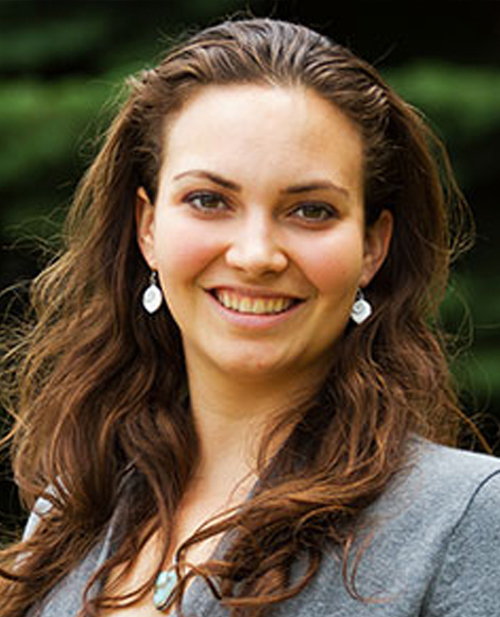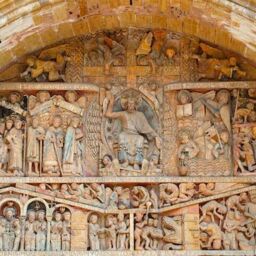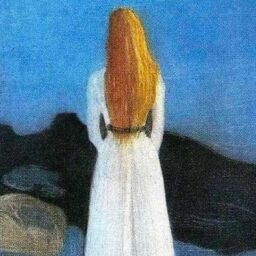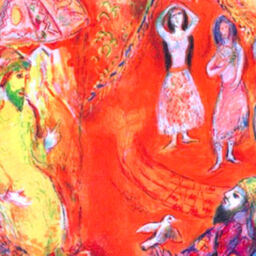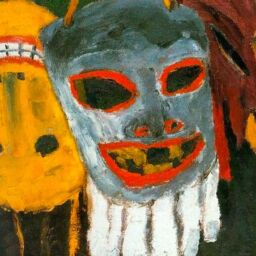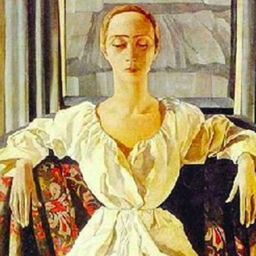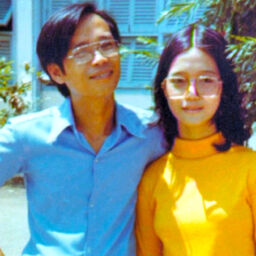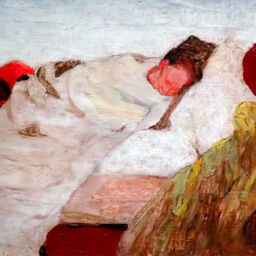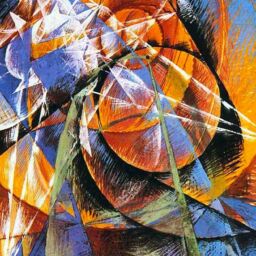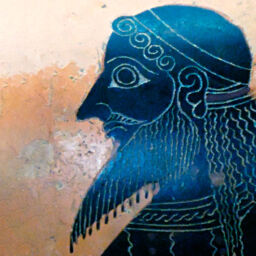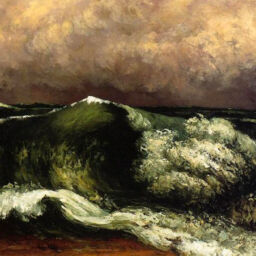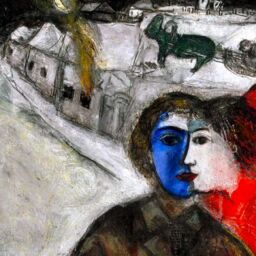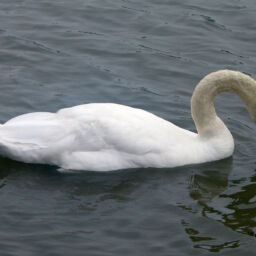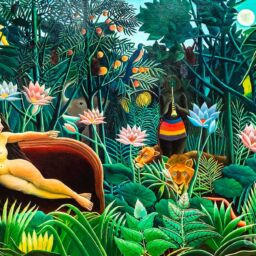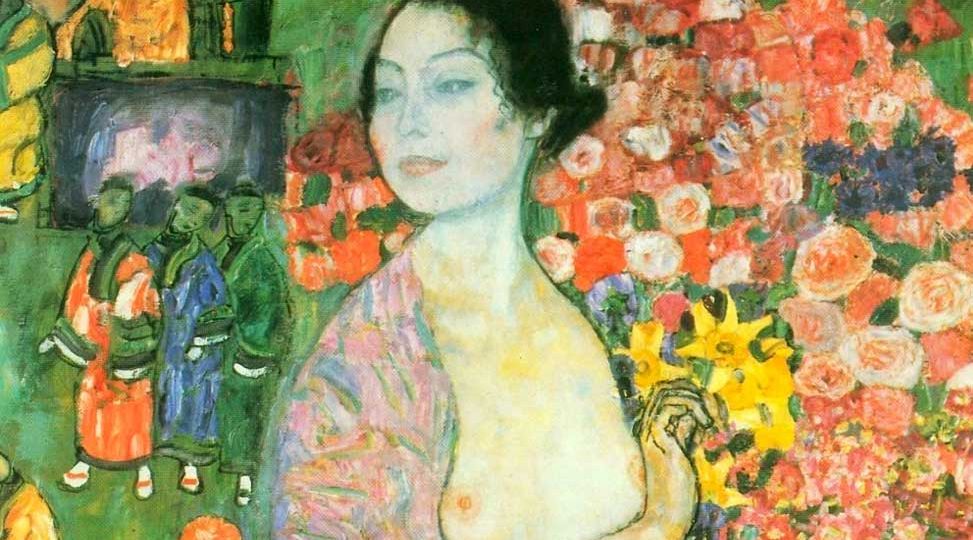
A Guide to the ESTP Universe
How Extraverted Sensates Relate to the Archetypal Realm
Download or listen to this article
Vanessa Jankowski, December 16, 2020
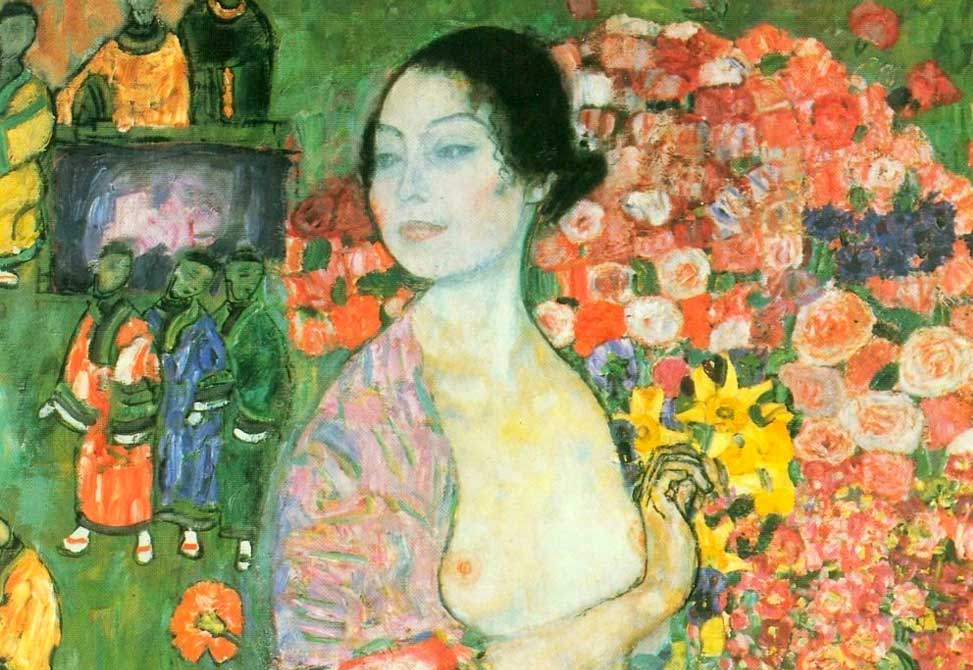
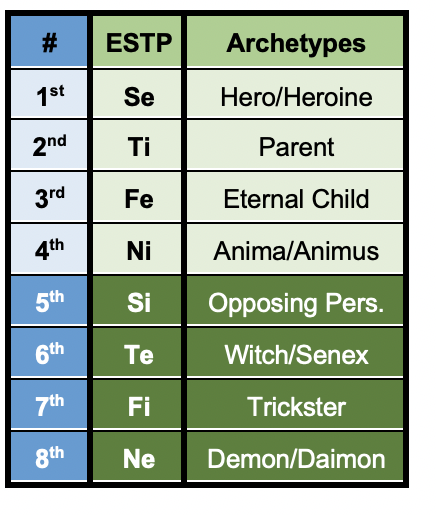
However, the standard educational methods of depth psychology do not easily reach the extraverted sensing types. In my early 20s, I would not have pursued classical Jungian and typology theories as they are commonly taught. At that time, I was attaining a Master’s in Clinical Social Work at the University of Chicago. The choice between psychology and social work had been guided by my love of experiential learning. The social work curriculum included a concurrent two-year internship along with course work, which involved thousands of pages of reading and writing. When such extensive academic work was directly applicable to my vocational field, I was engaged. The program brought together theory and practice. I wanted the inner world working with the outer world. I sought to learn the theory that facilitated working with the outer world. I wanted to experience the relevance; I sought to do something with what I learned. As an example, I had always been a good student, but during my junior year of college, I was tired of doing mock proposals. To keep myself engaged and energized, I took it upon myself to create a real environmental proposal, a river restoration in the area of the college, which got funded and implemented. Also, I chose a field-based study-abroad program, working with Aboriginal elders and sustainability experts and implementing their knowledge. This method of integrating scholarship and practice would later facilitate my recognition of the archetypal movements (Ni) in the outer reality (Se).
The first issue to address to reach extraverted sensing types is not what is taught but how it is taught: the methods used to teach it. Much of the depth psychology curriculum is conveyed through writing alone, without outer-world implications. Se types enjoy more engaged learning experiences. Although an avid reader, I would rather learn by doing than learn by reading. It is also helpful to demonstrate how what is being learned can be practical and helpful to the ESTP’s purpose. This is also true of doing therapy with extraverted sensing types. For example, if an Se type comes into my clinic, I avoid professional jargon and start with more application than theory, using everyday language. Other types prefer the theory being spelled out for them, as if it shows them what they will experience. People with Se preferences tend to want directly applicable help, whatever the theory might be. After the application has been shown to be effective, they have more interest in learning the theory. For example, an ESTP man whose wife is mad at him and whose kids are running wild may also be feeling bad about himself. Rather than discuss family systems theory or inferiority complexes, I demonstrate and teach him methods that improve his situation. I teach about “holding environments” and “stable objects” by using real world examples of setting boundaries, teaching skills to respond and calm feelings, and taking time to tend to one’s needs. I use diagrams, charts, and practical applications where applicable. After this is shown to be useful, I can move on to discussing a Jungian inferiority complex in similar ways. I include the archetypes of orphan and judge, and I demonstrate their voices so he can hear them. When the client asks, “What do I do with this information?” I tell him, “You have to learn to recognize these voices first and then learn to stop believing them, detach from them.” To further help him do that, I assign him meditation or writing exercises. Starting with the immediate, objective reality gains buy-in and trust for the more ethereal and psychological.
In teaching Se types about the archetypal realm, I suggest the inclusion of two main components: showing real world examples and teaching the relevance to the theory. Showing real-world examples through experiential-based learning exercises, videos, and stories of the theory in practice aids in the “seeing” of the theory. These methods also help extraverted sensing types experience the inner world and synchronicity and the archetype’s psychoid nature. Connections through demonstration show how depth psychology principles influence objective reality, revealing their utility and benefits. Growing up, I loved Native American myths, stories showing the archetypal, spiritual principles in the natural environment. The capabilities of a forest to forgive by regrowing after being clear cut, the protective fierceness integrated with loving softness in a she-wolf’s relationship to her pups, and the trust of intuition to guide the monarch butterflies on the migration path are just a few examples.
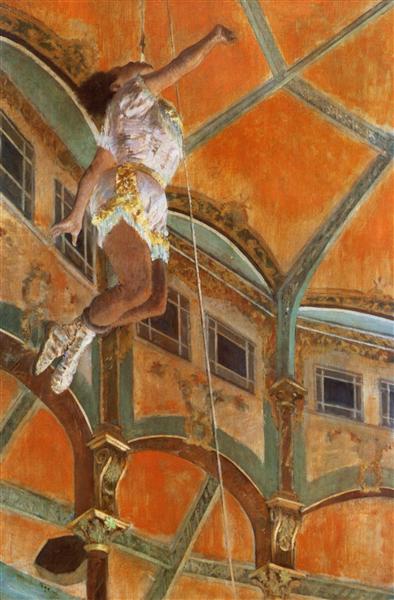
A Challenge-Seeking Childhood
Without guidance, the individuation process of ESTPs can be a series of crises and confrontations with the unconscious, which can leave them feeling a bit crazy or beyond help. These crises come from the psychological, archetypal, and intuitive influences outside the conscious reality of the young ESTP. These crises of unconscious and undeveloped non-dominant functions are not unique to an ESTP’s youth. Using my youth as a case example, I can provide insight into how to recognize the struggles of the young ESTP and how typology can aid these developmental stages. Depth psychology and typology provide frameworks to make sense and meaning of these developmental experiences. Unfortunately, depth psychology and typology are commonly taught in ways that do not reach ESTPs, especially when they are younger. Yet even at an early age, ESTPs can benefit from typology.
The written descriptions of the psychological realms do not directly translate for an ESTP. Even the typology assessments do not work as well for extraverted sensation types as they do for other types (Berens, 1997). Jung’s terminology is opaque to many sensing types. Before I experienced the psychological levels and identified the experience as such, the Jungian literature did not make sense. At best, it sounded like poetry, describing events I had never seen. The dense scholarly work of Jungians also requires sitting down to read and write for profoundly long hours. If ESTPs do not know how to integrate the material, the time and effort do not pay off in their internal cost-benefit analysis. Once the auxiliary function, introverted thinking (Ti), is developed, this changes. ESTPs do not always need something new to hold their interest, but new levels of achievement help keep them engaged. Martial arts belts, delineated levels of difficulty in skill or art form such as musical classifications, and rankings within the military are all examples of achievement that provide an external scale of progress or an objective indicator of one’s personal best.
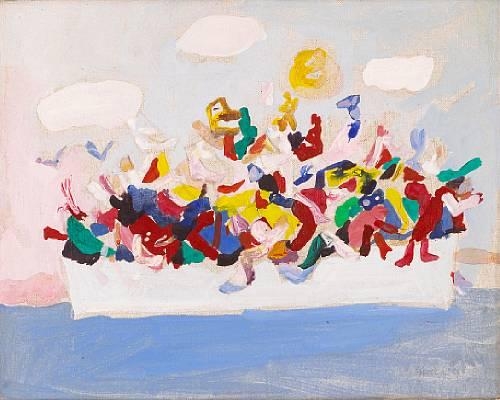
All these endeavors revolved around my young life’s greatest passion—horses. I was actually doing all these concurrently through my life, demonstrating the “action packed” aspect of ESTPs. Horse training satisfied my ESTP need for freedom, physical activity, and thought-provoking challenges. When I made my way into rehabilitating abused horses, I also satisfied my moral need to make the world a better place. Equestrian activities were my primary organizing principle for the first 18 years of my life. At five years old, I asked for lessons at the nearby stable, convincing the trainers to start me earlier than the six-year-old limit. By age nine, I realized that to become competent, I would have to ride more often. My parents were pastors and did not have enough money for more lessons, so I figured out another path. I knew there were horses just standing around at the barn in need of exercise, so I asked around and found an interested owner. I agreed to a deal where I could ride the horse whenever I wanted, but I had to pay half the board, creating the need for a job. I knew the barn needed workers, so I asked for a job. After the owner was done laughing at my request, he offered me a trial run. This is how I was hired at ten years old.
These stories exemplify the way in which extraverted sensing and introverted thinking assess a situation, devise a solution, and implement the action steps. My mother used to say that “no” was just the beginning of a negotiation with me. This was not because of some innate confidence in my abilities but because I had the view that life should make sense. ESTPs believe that there must be a way of working out a situation that can meet most people’s needs, and this attitude enables them to assess the needs and criteria of the people involved in a situation or business deal and work out a solution. Their approach makes them excellent managers, trouble-shooters, or (as in my case) therapists. The dominant extraverted sensing and tertiary extraverted feeling (Fe) assess the situation, while the auxiliary introverted thinking comes up with a process and theory to link these together. The inferior introverted intuition (Ni) then clicks into place with these “Aha!” moments and ideas. Since inferior introverted intuition cannot be called on easily, the thinking function (Ti) allows for purposeful action until the intuitive insight arrives.
By age 13, I had my first horse and was also established in a scholastic hippology event called “Horse Bowl.” Our team competed at the state level each year, and I won the Individual Championship at Junior Nationals. This program requires a veterinary level of knowledge about horses; its breadth and intensity of study is staggering: riding styles; tack and its care; the evolutionary processes of horses; all the horse parasites, their life cycles, identification, and treatment; and the inner working of the horse—bones, ligaments, organs, hormones, and essential amino acids. We had to recognize the symptoms of illness and know the treatment. The information was taught through drills, observation of the horses we lived with, pictures, memory tricks involving songs, and assigned readings (which I ignored when possible). Although it has been over twenty years, I still remember the ten essential amino acids. By fifteen, I was a live-in student at the stables. I was barn manager, trainer for all horses, and nanny for the owner’s children. By age sixteen, I was a professional horse trainer and had my second horse. I was planning to try out for the Olympic team and defer admission to college. Then, I discovered depth psychology, and everything changed.
Conflating the Material and the Psychological Realms
The weakness of the inferior introverted intuition function can prevent ESTPs from seeing the value of their accomplishments and their out-of-the-box thinking. They often find it hard to grasp the significance of a situation (Shumate, in press). This theory holds true with my experiences. Only later in life did I recognize my capabilities were unique. Moreover, it was hard to stick to what I wanted when it would upset others, a consequence of having introverted feeling (Fi) in an unconscious position and extraverted feeling (Fe) in the third.

One example of how I confused the sensing and intuitive levels occurred frequently on fishing trips. I would get bored when the fishing was slow, and the nearby tree-covered bluffs would attract my attention. Somehow, I’d convince my dad to take me exploring. I did not know what I was looking for, but it always felt like a treasure hunt and was enjoyable. It was only much later in life that I recognized that the areas in nature that were calling me represented unconscious yearnings. Depth psychology gave me the lens to see that what I was actually called to explore was not only the natural, physical world but also the archetypal realm in the collective unconscious. Sensing types may frequently experience the pull of archetypal symbols, but they confuse them with the literal world. When this is made conscious, ESTPs can easily see the marriage of the literal and psychological realms.
Religious Life for the ESTP
Religion was complicated for me in my youth. Both of my parents were United Methodist pastors, so I grew up a child of the whole church community. I enjoyed being in the epicenter of church activities, but I also struggled with religious teachings meant for the inner world. In childhood, extraverted sensing and extraverted feeling were the primary ways I engaged with the world. I saw the church as a community of good people, and I wanted to be a good person, too, engaging my extraverted feeling. The problem lay when the focus was on Scripture. Because I had not developed a conscious inner life, I viewed the religious principles meant to guide and feed the inner world as if they all applied to the literal realm. Everything sounded like repeated ways of saying “be a good person.” I did not understand why this would need to be repeated over and over.
Further complicating the situation was the Methodist church itself. Like most Protestant denominations, most iconography and symbols were removed in order to focus on the Scripture. For an extraverted sensate, this translated into boredom, which I did my best to repress so as not to hurt people’s feelings. Luckily, there were songs and other movement parts of the services. Having to sit still, listening to seemingly repetitive information (Scripture) on honey-oak furniture with rounded corners, my extraverted feeling kept me quiet so as not to upset anyone, but my extraverted sensation wanted to be done. The church services were only an hour or so, but for my type, days and weeks passed during each service. Extraverted sensing types need a variety of colors and patterns, just like extraverted intuitives (Ne) need a variety of ideas. The differentiation and integration of my Ni function would not start until years later.
Another example of my missing the point of a religious feature involved the prayer chain. The church prayer chain was an information network that was notified when members wanted people to pray for them. Whenever my parents would get calls to put someone on a prayer chain, I would wonder what the point was. I would think, “Sally does not need prayers; she needs real help for real problems.” I later acquired a loving devotion to spirituality and recognized the value of such endeavors, but in childhood I could not understand that the needs of the inner world are different from, not less important than, the needs of the outer world. Sharp (1987) observed that “the inner life [of an extravert] always takes second place to the outer necessity” (p.39). Had my typology been understood and taught, I could have been more understanding earlier on.
Nevertheless, having extraverted feeling in the third position and introverted thinking in the second position helped with another aspect of being a pastor’s child. People who knew my parents or were members of the church thought that I knew them equally well. This created a phenomenon of people who were strangers to me coming up and starting conversations. I was able to develop a system to connect with these people who thought I was privy to their complete history because my parents knew them. My system was a series of questions that could be applied to any congregant, such as “How is the family?” I could match their affect and make them feel heard. My extraverted feeling presented me as more caring then I actually felt. I was not insincere. I sincerely did not want to hurt the person’s feelings, but I could not care about people I did not know well. The constant need to be aware of others’ feelings kept my introverted feeling function suppressed in the unconscious (7th position) so that when it erupted, my feelings ran amok.
Years later, my mother said she found the Scriptures “numinous.” Until studying depth psychology, I always conflated the term numinous with the socially sanctioned biblical text. Typology helps people understand what connects them to the sense of aliveness. For an extraverted sensing type, the outer events are the starting point. With an understanding of archetypes and archetypal movement, sensual experiences can become holy and transcendent.
Fear of Change in the ESTP
With extraverted intuition (Ne) in the eighth demonic position, I naturally hate change. As Carol Shumate (in press) has outlined in the table “The Function-Archetypes for All Sixteen Types,” this positioning can cause one to be afraid of change. United Methodist pastors are appointed one year at a time but commonly stay at an appointment for four to six years. We moved quite a bit. I relocated four times before I was out of high school. Each time was terrifying, and I felt utterly destroyed. Once I got my driver’s license, I kept my basic necessities in my car and traveled from horse trainers, to friends, to my parents’ house. I felt nomadic and most secure this way. This apparent paradox of the Se type, the need to be unconfined and in motion yet to have consistency in environment and routines, illustrates a difference between Si and Se preferences. Both types can be change-resistant, but the Si types develop deep roots and are home-oriented, whereas young ESTPs feel confined by homemaking and can feel trapped by putting down roots. One reason that ESTPs resist change may relate to the Ti auxiliary as well as the Se dominant: for an ESTP, change seems to remove the objective basis of base reality. In the process of relocating, there are no known or familiar objects to interact with and no systems to understand. When I moved the basic needs into my car, I could have consistency wherever I went. When moving houses, everything is packed into a box and new routines have not started yet. My parents must have recognized this because when a move was announced, they drove me to see the new house. This provided a visual to start imaging what was to come, which provided grounding. Seeing the literal place helped calm my terror of the unknown.
When I was around four or five years old, the fear of death became a constant, showing up as I was going to sleep. This, too, has its roots in the ESTP type. Until twelve years old, my fear of dying was an almost weekly occurrence. Later in my professional career, I became a grief counselor and learned that children of four or five are not supposed to understand the finality of death, yet I did. Without the recognition that this can have a typological basis, I was left to my own fear of simply ending. The fear of death for an ESTP seems to be partly a result of fear of change coming, but also a fear of the loss of the senses. With no connection to the material world, death would be just a void. I feared the nothing-ness. These fears are reflected in Western culture, which is based on a material world with the resulting denial and resistance toward death and endings. Not only would a more sensate approach to typology help sensate people, but it could also have a positive cultural impact.
One night during my childhood, my introverted thinking auxiliary function came up with a plan to avoid slipping into the endless nothing-ness of death. Thinking the sun would not come up until after I went to sleep (primary childhood narcissism of a five-year-old), I thought I could simply stay awake all night and prevent tomorrow from coming. This way, I would not grow old and die. As my parents went to put me to sleep, I screamed that they were killing me. Somehow, they figured out my plan and tried to console me through reason. They explained that everyone died, which only made it worse. Then they tried to describe heaven, which sounded like being stuck in church for eternity. I simply cried myself to sleep.
While other types have their primal fears, the hell of an ESTP is change (death) that cannot be prevented, which will end the systems and physical sensations. When I realized that talking about it upset my parents, my extraverted feeling tertiary had me keep this fear to myself. I knew that no one on earth could help me, so I felt hopeless. Upon reflection, I do not know whether depth psychology would have helped here. I needed to have an experience that was not extraverted. That said, it might have helped if someone could have defined the problem for me. Either way, the help came in the form of an experience of intuition.
The Shock of Erupting Intuition
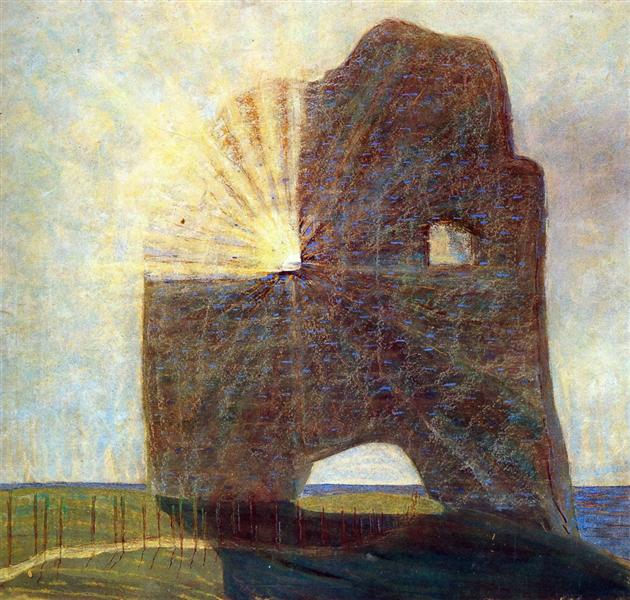
From then on, exhausting my sensing function would bring on my unconscious intuition; it emerged during emotional moments in high school. I had never heard of intuition, so I thought I was going crazy. Sharp (1987) said, “The Achilles heel of this type [Se] is introverted intuition. What is not factual, what cannot be seen, heard, touched or smelled is automatically suspect. Anything that comes from inside seems morbid” (p. 56). Several incidents stand out, showing how intuition manifested for me. The first time was auditory: I heard the earth scream as I was driven past a strip mine in West Virginia on a mission trip. The second time, I discovered I could physically feel what my boyfriend was experiencing in response to his emotions. This was the polluted form of intuition Jung (1921/1971) referenced, which comes from the intuition being unconscious (¶ 608). The third time, my intuition came as a voice I heard in the high school hallway, urgently telling me to “get a move on in life.” The words made no sense. I could not fathom what else I could be doing because I was as engaged with life as I could be. However, my life was primarily external and literal. This voice was from the inner realms, and I needed a mentor to teach me. As I did not have a guide, I did not know how to respond. Because ESTPs have spontaneous intuitive experiences, a model of teaching depth psychology would help them interpret such eruptions and become excited about the non-sensate metaphysical realm.
The fourth intuitive experience was an existential crisis I had in my parents’ basement. I was walking around, thinking about visiting colleges in the fall, when my life flashed before my eyes. I saw I that would accomplish the tasks of college, get a career, have a family, grow old, and die. This was all there was to life. Life felt so utterly devoid of meaning and so utterly dull that I literally could not move my feet. There I stood, frozen. I did not understand the point of living. To be clear, I was not suicidal: that would have had a point. I figured I could not stand there forever, so I had to find a way to get my feet moving. I promised myself that I would travel to beautiful places around the world. This only seemed a half measure, but it got my feet moving. I had used my heroic sensation function to break the inertia, but that was precisely the issue: my soul was calling for something else.
All my accomplishments had been gratifying, but I felt like I was missing something big. My ESTP ways without psychological guidance had led me to be an overachieving, perfectionistic, socially-involved extravert who had pushed the extraverted sensing, introverted thinking, and extraverted feeling functions to their limits and beyond. I had developed a life with no downtime, a common problem for ESTPs.
A Mentor in Depth Psychology
The depth of meaning in life came to me through Jungian psychology. Although ESTPs are well-represented in the dominant culture and supported by the extraverted world of Western culture, they are not regularly found in the field of depth psychology. One theory is that extraverted sensing types are not as interested in the archetypal, non-literal realms. I do not believe their underrepresentation stems from a lack of interest but rather a lack of awareness. Misunderstood barriers for ESTPs keep them disengaged.
During my adolescent period of erupting intuition, every three to six months a small obstacle would break the dam within me, and a torrent of emotions would come sweeping out. When extraversion is too extreme, “the unconscious becomes overactive, it comes to light in the symptomatic form” (Sharp, 1987, p.41). My unconscious came to the surface in uncontrollable tears of frustration. This was the introverted feeling function of the unconscious presenting in symptoms, due to the inflated extraversion of my life.
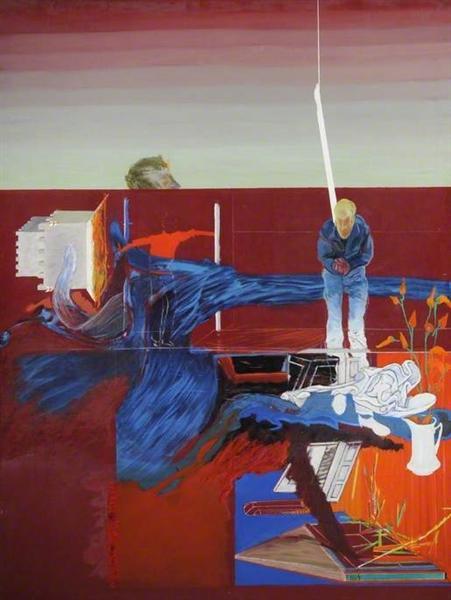
The archetypal theories and principles of the inner world were applied directly to the lived experience being discussed. This was key for me because it demonstrated the practicality of the information. Dubrow’s model operationalized the archetypes in a phenomenological and extraverted way. At one conference for social workers, Dubrow gave a demonstration of what guidance means in the healing professions. In these fields, the responsibility for other people’s lives can be overwhelming. Dubrow gave the audience flashlights and turned off the lights in the auditorium. He said, “This is all you are to others, all the power you have with helping people. You provide a light in the darkness to help them see.” I think of this often when I am trying to assess what it means to be a clinician.
Kevin Dubrow bridged the literal and the imaginal realms. When I shared my insecurities, he asked what voice (archetype) was speaking. For me, this was commonly the unlovable orphan archetype. In groups, I was able to observe other people’s psychological presentations connected to other archetypes. Dubrow’s ability to understand the psyche and intervene on this level made him seem like a wizard. I had not met anyone like this before. His ability to understand me in these terms was absolutely transformative.
In Dubrow’s model, the core of being is defined as the ability to enact soul and live by truth, values, and moral character. The soul is the source of aliveness stirred to life by engaging in areas of interest and passion. The model explains that we do not always understand or know why we are feeling the way we feel because we are unconscious of much that affects us. As Marie-Louise von Franz (1971/1984) taught, the inferior function must be developed by going through the auxiliary functions. The model Dubrow taught me engaged my auxiliary function of thinking and helped manage my feelings. Part of his model includes identifying and investing in what truly matters to who you are. This evolves into vocational pursuits or what Hillman (1996) called “the soul’s code.” In the first two years of work with Dubrow, I had gained the ability to self-reflect and be aware of my feelings and wants in life, accessing my deeply buried introverted feeling (7th position). Uncovering my Fi function was vital for developing a life based on what I truly wanted. I needed to be clear enough about my Fi to balance my Fe.
Dubrow was a bridge for me to the Jungian realm and process. In honoring this work, I understand how my life experiences can be a bridge to other Jungian teachers. I can show what takes place for the sensate types and how to help them discover the psyche’s inner realms. Examining my years without depth psychology, I can demonstrate my life stories at crucial junctures and provide examples of Jungian ideas that would have helped.
Inner Discoveries Transform Outer Reality
The most significant challenge to introducing ESTPs to depth psychology is simply getting them into their inner world. For example, ESTP women tend to be completely unconscious that they are stressed and anxious, probably due to the Fi in the 7th position. The next barrier is demonstrating the usefulness of the inner world. The tipping point for me came in a poetry exercise. Dubrow used a 10-line poetry writing activity to help with this step. The activity involved drawing ten lines by hand across a piece of paper, briefly meditating on an issue or question, and then beginning to free-write on those ten lines. I had to write from one end of the line to the other. After filling each line, I reread each line as if it were a complete sentence, like a 10-line poem. The line breaks allowed for the unconscious to express itself with accidental, synchronistic meaning. Reading the poem allowed my intuition to read my unconscious desires. This exercise opened my eyes to my feeling that I had to leave for college and stop training horses. The intuition came in as I read the poem, and I simply knew I needed to go to college. This integrative physical-mental approach allowed me to start to corral the sensation and thinking functions. The work leading up to this poem was equally required for me to understand depth psychology.
Doing this exercise led to a complete life change at the end of high school. At eighteen, I left my dream of Olympic competition; the barn and house I had helped build; my horses; my trainer’s children I had helped raise; and all the time, money, blood, sweat, and tears that had gone into these things. The work had made me realize that I did not want to ride horses for the rest of my life. I loved them, but at the edge of my awareness, I felt myself becoming tired of it already. My sensation function had started to wear out. I wanted more mind work, theory, and learning. This realization started a more integrated way of living. I learned that both the soul—the essence of one’s being—and the self—defined as the ability to enact the soul’s yearnings—were needed to have a psychological core. This approach took magic and mystery out of the fantasy realm and integrated it into real life. The stories became teachers for how to constellate different archetypes. Life started to make much more sense. The education with Dubrow showed how all this was useful for actual living.
Nevertheless, it took a long time for me to integrate these lessons. Going to college felt like going to summer camp—lots of fun and adventure. I spent summers as a wildland firefighter and then as an outdoor counselor with at-risk youth. I explored becoming a social worker through work with foster care kids, but it broke my heart to send them back to broken homes. So I left to study environmental sustainability in Australia for a year. My efforts were on a project where the goal was to help integrate Aboriginal elders with the local government. I realized I had flown all the way around the world to get away from social work, and all I did was become involved with another social justice program. This is when I truly realized that I wanted to be a social worker and dedicate my life to guide people into living integrated lives where the outer and inner worlds worked together. I finished the trip. After a year of meeting new people every day and giving generously of myself, I had never been more tired in my life. I wanted to go to graduate school and put down roots. My Se was officially worn out, and I was willing to start working on Si.
Hawk Vision
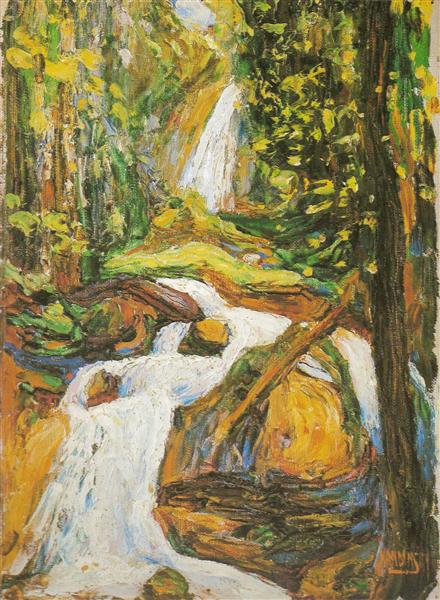
It is essential to understand how difficult it is for the ESTP to integrate introverted intuition. A quantum leap is required for this to happen. Although there had been intuitive experiences, I did not yet have a working relationship with my intuition. This came on a retreat a few years later. We were supposed to go into nature alone and engage with a dream image in an active imagination exercise called “speaking to the image.” I was working with a dream image of a hawk. The practice was to meditate on the image until there was a spontaneous occurrence of the image, in which one could then dialogue with the figure. Alone with no one to talk to, I spent hours on this task to no avail. I even climbed a tree in an attempt to be in a hawk space. The futility and hopelessness were palpable. At one point, up in the tree, I almost entirely quit the retreat. Then, the despair passed, and I noticed a light dancing on the leaves that looked hawk-like. Encouraged, I persisted. Eventually, I left the tree and laid down by a river where I practiced a Zen meditation of becoming utterly involved with my senses. It is a process to move out of the ego through immense concentration on the senses. Finally, I was in my element of sensation. I focused on the sound of the river until my consciousness was completely absorbed in the river. I had the feeling of floating up and out of my body, hovering. That was when the hawk appeared. It split into four hawks of the four primary colors, flying in a circle. I had done it. The hawk image was teaching me about wholeness and the medicine wheel of elements, and just at that point, I opened to my intuition. I had found a way into my inferior function.
When Up is Down and Vice Versa
With my intuition in a better relationship with my sensation, I began to sort out the literal and psychological realms. Throughout my later teens and early twenties, I started hiking mountains instead of exploring forests. Again, I was drawn with a sense of wonder to these mountains. I would go looking for the source of that awe and hike to mountaintop after mountaintop. With intuition more integrated, I had an epiphany: I realized that where I felt this awe was a symbol of the numinous. The epiphany came during that year-long trip to Australia and New Zealand. I had just finished hiking yet another mountain in the Southern Alps on the South Island of New Zealand when I suddenly realized what I wanted. As I approached a mountain, I would be struck with awe. When I was hiking, I expected to have an increase in the feeling of awe, or to find the source by getting closer and higher. When I moved closer, the image or symbol changed, as did the feeling. I learned to stop and sit down wherever I encountered the feeling and meditate. In these experiences, I began to make conscious the relationship of the Se and Ni functions; the sensate experiences were holy and transcendent, too. Nature was my Scripture connecting me to the numinous.
This understanding came, I believe, from my extraverted intuition in its daimonic form: “a series of associations leading to new insights” (Shumate, in press). I think this happens in part due to extraverted sensing in the first position. The gathering of a series of events builds up from the sensate wonder and longing for new experiences. Finally, the conscious stockpile of experiences hits a tipping point, and the unconscious erupts with whole pictures, connecting the experiences. This is how I have experienced the occurrence of new insights, as a pictorial connection to the series of events. As Jung (1921/1971) said, sensation pays attention to “the objects that excite the strongest sensations … with the strongest vital instinct” (¶ 605). When the archetypal and symbolic importance is understood, objects become more interesting. As an extraverted sensate, I was all about the external experiences, but when there is only literal, concrete experience, all the colors in the world become boring. I needed something more. Symbolic thinking was a way to engage the outer world experiences, thus seeing the external as a mirror of the internal.
Hestia, My Nemesis
The engagement of the unconscious functions for an extraverted sensing type seems to occur more easily when the physical realm is engaged through ritual forms. I learned the truth of this again recently at my current age, 34. I have been overly dedicated to my auxiliary introverted thinking function because of my depth psychology studies and doctoral work. Flying off into the ethereal realms of intuition has recently brought demands from the neglect of introverted sensation (Si) in my fifth position: I needed to attend to my body, the physical care of my home, and my capacities as a homemaker and wife to restore balance. Beebe (2006) labeled the energy of the fifth position the opposing personality. After years of individuation work, I realized I needed to bring in the archetype that I was least interested in learning about: Hestia. Hestia is the Greek goddess of hearth and home.
My husband said I had an anti-Hestia complex. I had rejected the traditional homemaker and wife roles long ago and thought I could manage without them. The rejection was an enactment of my family dynamics and my identity as a modern woman. My task required learning what it meant to be a homemaker. I came to a working definition of homemaker as the one who is nurturing the spirit of home, bringing in archetypal symbols to feed those within the household. The holidays were coming. My husband is Polish American, and I am a collective of Europeans descended from the Celtic people, along with Cherokee. I took this ancestry as an inspiration for holiday decorations.
The Si function focuses on details, and my first attempt at using Si involved a lot of Se. I decided to transform our split-level staircase railing into a birch-tree winter forest with giant red bows. The forest was an image important to both my husband and me. The red and white of the bows and birch logs brought in the Polish national colors. With the birch logs and imitation evergreen boughs lashed to the railing, I set to making the bows. It might have been easier to buy the bows, but this would not have been as much of an adventure (my Se requirement). Plus, there were no bows in the deep red that my artist’s eye demanded. I thought, “How hard could it be to make a bow?” As an artist of over thirty years, I arrogantly thought this would be easy. I had forgotten this was ritual to address a complex, with an archetypal core fueling it.
The first point of resistance to be overcome was that the best instructions were created by women on YouTube who embodied what I most feared becoming: a woman whose greatest achievement in life is bow-making. The complex around being a homemaker made me feel each act towards homemaking brought me a step closer to becoming a “pathetic woman.” It is important to understand that this is not my conscious evaluation of homemaking. I honor and respect men and women who have this skill and embody this archetype with ease. My association of “homemaker” with “pathetic” was the complex I had to work through to become a homemaker. Making the bows was my ritual to ground the work. I came to understand that the Si function in my 5th position was part of the complex. Whatever is in our 5th position feels like a waste of time: “Who would want to do that?”
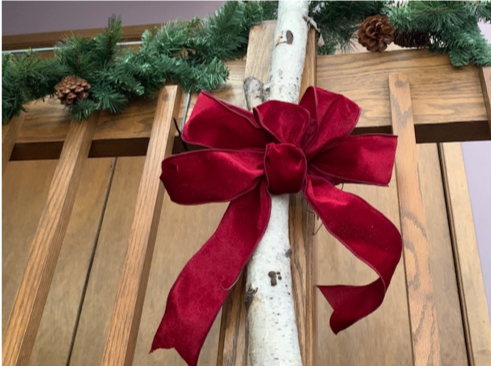
One of the gifts that ESTPs can bring to depth psychology is that we trust what we can experience. If we are taught about depth psychology, we can provide experiences to demonstrate the existence of archetypes. I think about Jung’s answer in an interview as to whether he believes in God. He said he does not have to believe because he knows. Although Jung was not an ESTP, this comment adequately describes what spirituality is like for an ESTP.
References
Beebe, J. (2006). Evolving the 8-function model. Australian Psychological Type Review, 8(1), 39-43.
Berens, L. (1997). Extraverted sensing, the MBTI, and the artisan temperament. Bulletin of the Association of Psychological Type, 20(3), 42-43.
Hillman, J. (1996). The soul’s code: In search of character and calling. Ballantine Books.
Jung, C. G. (1976). Psychological types (R. F. C. Hull, Trans.). In H. Read et al. (Eds.), The collected works of C. G. Jung (Vol. 6.). Princeton University Press. (Original work published 1921)
Jung, C. G. (1997). Visions: Notes of the seminar given in 1930-1934 (Volumes 1 & 2). (C. Douglas, Ed.). Princeton, NJ: Princeton University Press. (Original work published 1934)
Sharp, D. (1987). Personality types: Jung’s model of typology. Inner City Books.
Shumate, C. (in press). Projection and personality development via the eight-function model. Routledge.
von Franz, M.-L. (1984). The inferior function. In M.-L. von Franz, & J. Hillman (Eds.), Lectures on Jung’s typology (pp. 1-72). Spring Publications. (Original work published 1971)
Images
Ciurlionis, M. (1907). The past. Retrieved from wikiart.org
Degas, E. (1879). Miss La La at the Cirque Fernando. Retrieved from wikiart.org
Goodnough, R. (1963). Crowded boat II. Retrieved from wikiart.org
Kahlo, F. (1933). My dress hangs there. Retrieved from wikiart.org
Kandinsky, W. (1900). Kochel waterfall I. Retrieved from wikiart.org
Klimt, G. (1918). The dancer. Retrieved from wikiart.org
Proktor, P. (1964). Beneath the surface. Retrieved from wikiart.org


